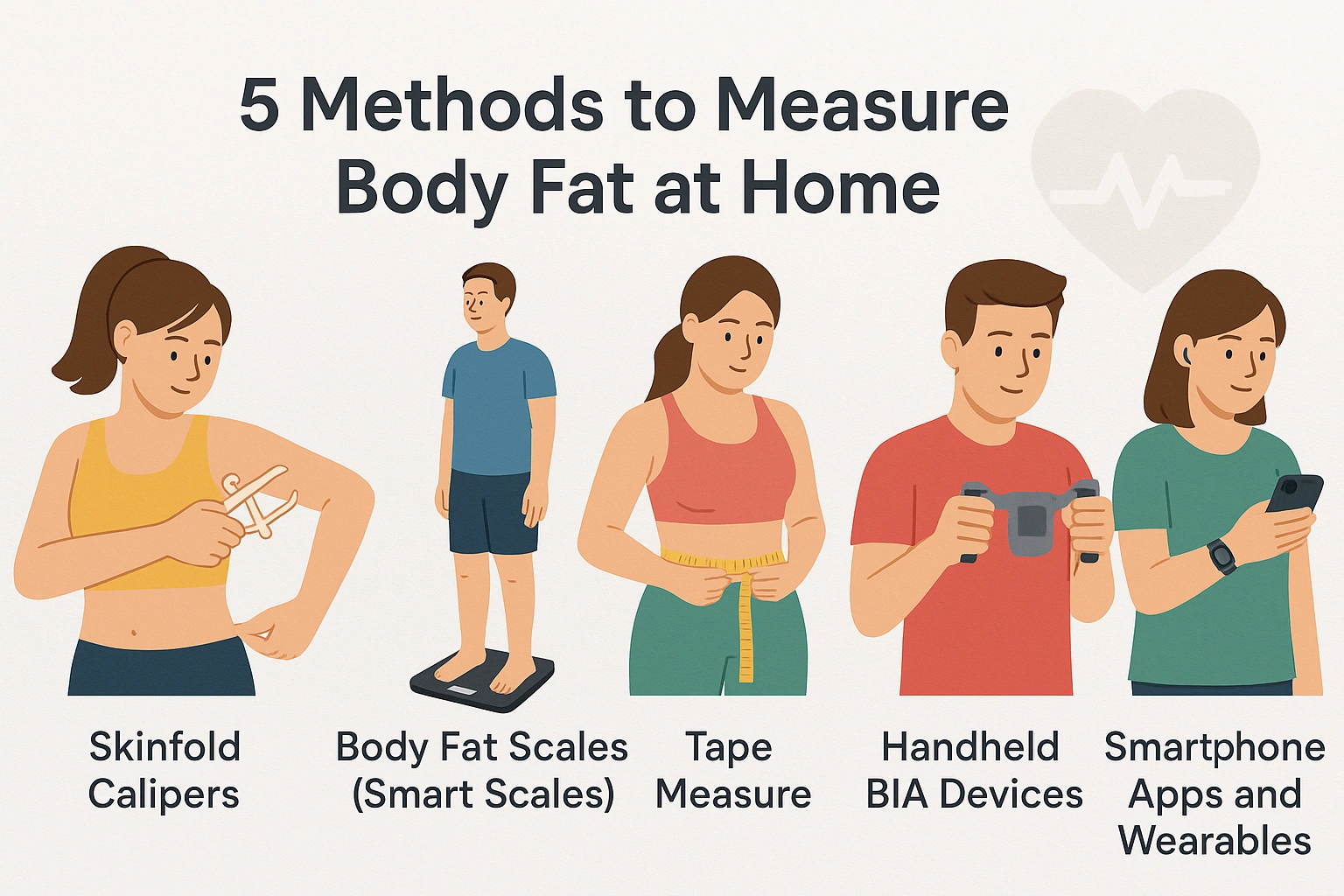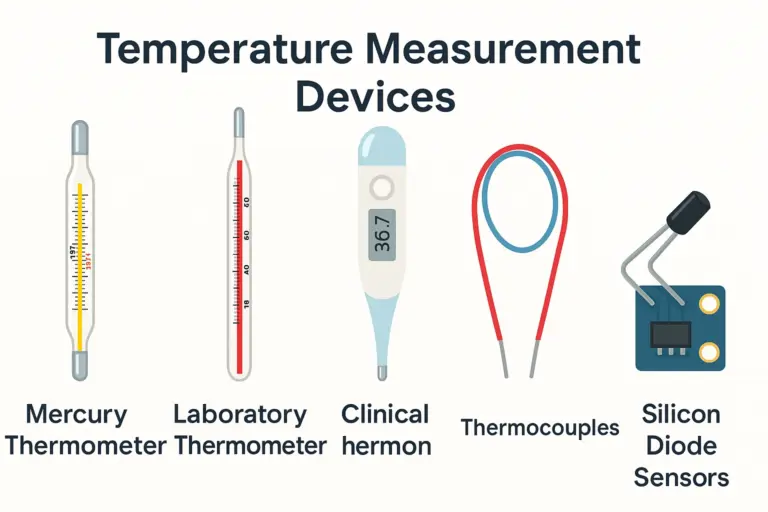5 Body Fat Measurement Device: Monitor Your Health at Home
Monitoring your body fat is a powerful way to gain deeper insights into your health and fitness progress—far beyond what the scale alone can tell you. While stepping onto a traditional scale can reveal your total weight, it doesn’t provide information about how much of that weight comes from fat versus muscle, bone, or water. Understanding your body fat percentage offers a much clearer and more meaningful picture of your overall health, helping you track true progress and make informed decisions about your diet and exercise routine.
With the right approach and tools, such as a body fat measurement device, you can easily keep tabs on your body composition from the comfort of home. Modern technology has made it simpler than ever to track changes in your body fat over time, whether you’re aiming to lose weight, build muscle, or simply maintain a healthy lifestyle. By regularly measuring your body fat, you’ll be able to see how your body responds to different workouts, nutrition plans, and lifestyle changes, allowing you to adjust your strategies for optimal results.
This guide will walk you through five easy-to-use methods for measuring body fat, discuss their accuracy, and provide clear, step-by-step instructions so you can get started today. Whether you prefer using a handheld body fat measurement device, a smart scale, or even simple tools like calipers and tape measures, you’ll find practical advice to help you choose the best method for your needs. By the end of this guide, you’ll be equipped with the knowledge and confidence to monitor your body composition accurately and consistently, empowering you to take control of your health and fitness journey from the comfort of your own home.
Understanding Body Fat: Why It Matters
Body fat refers to the proportion of your total weight that is made up of fat tissue, as opposed to muscle, bones, or water. Keeping track of your body fat percentage is crucial because it helps you:
-
Evaluate overall health: A balanced body fat percentage is key to well-being.
-
Monitor fitness progress: See how your diet and exercise are truly affecting your body.
-
Assess disease risk: High or low body fat can impact your risk for conditions like diabetes and heart disease.
-
Refine your routine: Use data to make smarter choices about nutrition and workouts.
While some body fat is essential for energy and insulation, too much—or too little—can cause health issues. For most adults, healthy ranges are:
-
Men: 10% – 20%
-
Women: 18% – 28%
Accurate measurement, especially with a reliable body fat measurement device, is essential for making informed decisions about your health.
5 Methods to Measure Body Fat at Home
1. Skinfold Calipers
What Are Skinfold Calipers? Skinfold calipers are handheld tools designed to measure the thickness of skinfolds at specific body locations. These measurements are then used to estimate your body fat percentage using established formulas.

How to Use Skinfold Calipers
-
Identify Measurement Sites: Common sites include the abdomen, triceps, chest, thigh, and suprailiac (hip area).
-
Pinch the Skinfold: Using your thumb and index finger, pinch the skin and underlying fat away from the muscle.
-
Measure: Place the caliper’s jaws around the pinched skin and note the reading.
-
Repeat: Take measurements at each site 2–3 times and average the results for accuracy.
-
Use a Formula: Input the measurements into a body fat calculation formula, such as the Jackson-Pollock equation.
Pros and Cons
-
Pros: Affordable, reusable, and relatively accurate when performed correctly.
-
Cons: Requires practice for consistent results; accuracy depends on technique and skill.
2. Body Fat Scales (BIA)
What Are Body Fat Scales? Body fat scales use bioelectrical impedance analysis (BIA) technology to estimate body composition. These scales are essentially a body fat measurement device built into your bathroom scale, offering both convenience and quick results.

How to Use a Body Fat Scale
-
Prepare: Ensure you are properly hydrated and have not eaten or exercised immediately before measuring.
-
Stand on the Scale: Stand barefoot on the electrodes.
-
Get Your Reading: The device will display your body fat percentage within seconds.
Pros and Cons
-
Pros: Easy to use, quick, and non-invasive.
-
Cons: Accuracy can be affected by hydration, recent meals, and exercise.
3. Tape Measure (Body Circumference) Method
What Is the Tape Measure Method? This method involves measuring the circumference of specific body parts (such as the waist, neck, and for men, the hips) and using equations to estimate body fat percentage.

How to Use the Tape Measure Method
-
Gather a Tape Measure: Use a flexible tape measure designed for body measurements.
-
Measure Key Areas: Common sites include the waist, hips, neck, and sometimes the chest and thighs.
-
Record Measurements: Write down the measurements in inches or centimeters.
-
Use a Formula or Calculator: Input your measurements into an online body fat calculator or use standardized formulas.
Pros and Cons
-
Pros: Affordable, requires no special equipment, and is simple to perform.
-
Cons: Less accurate compared to other methods; assumes consistent fat distribution.
4. Smartphone Apps and Wearables
What Are Smartphone Apps and Wearables? Some apps and wearables now function as a body fat measurement device, using sensors or photos to estimate body composition.

How to Use Smartphone Apps and Wearables
-
Download a Reputable App or Use a Wearable: Choose an app or wearable device with positive reviews.
-
Follow Instructions: Use the app’s camera or wearable’s sensors as directed.
-
Get Your Reading: The app or device will estimate your body fat percentage.
Pros and Cons
-
Pros: Convenient and easy to use; integrates with other health data.
-
Cons: Accuracy can vary widely; results may not be as reliable as other methods.
5. Handheld BIA Devices
What Are Handheld BIA Devices? Handheld body fat measurement devices use bioelectrical impedance analysis (BIA) technology, similar to body fat scales, but focus on upper body measurements. They are portable and easy to use.

How to Use a Handheld BIA Device
-
Prepare: Ensure you are properly hydrated and follow any pre-measurement guidelines.
-
Hold the Device: Grip the electrodes as instructed.
-
Get Your Reading: The device will display your body fat percentage within seconds.
Pros and Cons
-
Pros: Portable, quick, and non-invasive.
-
Cons: Accuracy can be affected by hydration and device quality.
Factors Affecting Accuracy
Several factors can influence the accuracy of body fat measurements at home, regardless of the method you choose. Being aware of these can help you interpret your results more realistically:
-
Hydration Status: Dehydration or overhydration can significantly affect bioelectrical impedance analysis (BIA) devices and scales, as water content in the body alters electrical conductivity.
-
Time of Day: Body fat readings can fluctuate throughout the day due to changes in hydration, meals, and activity levels. For consistency, measure at the same time each day.
-
Recent Meals or Exercise: Eating, drinking, or exercising before measuring can impact BIA and some other methods.
-
Body Fat Distribution: If fat is not evenly distributed, methods like BIA scales (which send signals through the legs) may be less accurate for individuals with disproportionate fat storage.
-
Technique and Skill: Manual methods like skinfold calipers require practice and consistency; errors in technique can lead to inaccurate results.
-
Device Quality and Calibration: The quality and calibration of your body fat measurement device or tool can affect accuracy.
-
Age, Gender, and Ethnicity: Different formulas and devices may be calibrated for specific populations, and results may be less accurate for those outside the intended group.
-
Skin Pigmentation and Thickness: For skinfold and some optical methods, skin pigmentation and thickness can influence readings.
Tips for Effective Tracking
To get the most reliable and useful results from your body fat measurements, consider the following tips:
-
Be Consistent: Measure at the same time of day, under similar conditions (e.g., before breakfast and after using the bathroom).
-
Follow Instructions: Carefully follow the guidelines provided with your body fat measurement device or method.
-
Track Trends, Not Single Measurements: Focus on trends over time rather than individual readings, as day-to-day fluctuations are normal.
-
Use Multiple Methods: Cross-check results using different methods to get a more complete picture of your body composition.
-
Maintain Good Hydration: Avoid measuring immediately after heavy exercise, meals, or large fluid intake.
-
Keep a Record: Log your measurements and any relevant notes (such as hydration status or recent activity) to help spot patterns and progress.
-
Practice Technique: If using manual methods like calipers, practice regularly to improve accuracy.
-
Update Personal Data: Ensure your age, gender, height, and weight are correctly entered into any device or app for more accurate calculations.
FAQ: Measuring Body Fat at Home
1. What is the easiest way to measure body fat at home? The easiest way is typically using a smart body fat scale or a handheld BIA device, as they provide quick, digital results with minimal effort.
2. How accurate are home body fat measurement devices? Home devices like smart scales and calipers can give a reasonable estimate, but their accuracy depends on proper use, hydration, and consistency. They’re best used for tracking trends over time rather than for pinpoint accuracy.
3. Can I measure my body fat without any special equipment? Yes, you can use a simple tape measure and online calculators to estimate body fat percentage based on body circumference measurements, though this method is less precise than dedicated devices.
Conclusion
Measuring body fat at home is an accessible and empowering way to gain deeper insights into your health and fitness journey. With a variety of methods available—from classic skinfold calipers to advanced body fat measurement device options—there’s a tool to suit every lifestyle and budget. While each technique has its own strengths and limitations, using a reliable body fat measurement device and understanding the factors that affect accuracy can help you achieve more trustworthy results.
Remember, the goal is not just to collect numbers, but to use this information to make informed decisions about your diet, exercise, and overall well-being. By monitoring your body fat consistently with a body fat measurement device, you can track progress, adjust your strategies, and stay motivated. Whether you’re new to tracking or looking to refine your routine, a quality body fat measurement device puts you in control of your progress.
When selecting a body fat measurement device, consider your needs, budget, and the level of accuracy you require. Many people find that a modern body fat measurement device—such as a smart scale or handheld BIA tool—offers convenience and reliable data. By using a body fat measurement device regularly, you’ll be able to see changes over time and make adjustments to your health plan as needed.
Ultimately, the ability to measure body fat at home using a body fat measurement device makes it easier than ever to achieve lasting, positive change. Whether you prefer a traditional approach or the latest technology, a dependable body fat measurement device is an essential tool for anyone serious about their health and fitness.
Check out Things That Are 3 Feet Tall on Dimensions Path.
Body Fat Percentage Calculator







